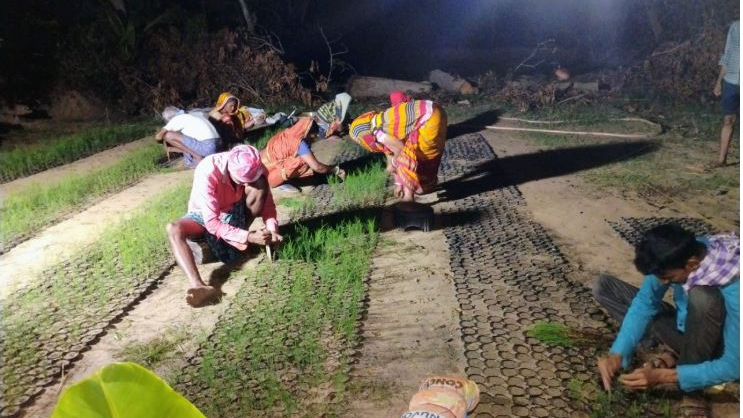

Jharsuguda, May 17: Sasmita’s journey began in childhood, planting saplings around her home. Even after marriage, her passion endured—encouraged by her in-laws, she began greening the spaces around her new home. Initially, her efforts were met with indifference, even criticism. But undeterred, she continued. Slowly, success followed. Saplings grew into trees, and skeptics turned into supporters.
In 2004, she brought together like-minded women to form a Forest Protection Committee—a grassroots initiative with a mission to restore and preserve the local ecosystem. Sasmita was unanimously chosen as its president. Today, the committee boasts over 25 active women members, all working under her leadership to push back the tide of deforestation.
Greening the coast, one sapling at a time
The group’s achievements are striking. Over 12 acres across Chaumukh panchayat have been afforested—7 of those in the fragile Kankadamal river mouth area, where rows of casuarina and acacia trees now stand as living barriers against coastal erosion.
But the journey has been far from easy. Government assistance has been minimal—restricted mainly to casuarina plantations. For everything else, the women have had to rely on themselves and their community.
“We go from village to village, raising awareness and collecting small donations—sometimes just ₹10 or ₹20,” says Sasmita. “With that, we buy seeds, set up nurseries, and raise our own saplings.”
Their self-run nursery has become the backbone of the movement. Every sapling planted along the coast comes from this homegrown effort, funded by the goodwill of local villagers.
A community effort that’s growing
Crucially, the community is now part of the mission. Locals help monitor sapling growth and even build protective fencing once trees mature. What began as one woman’s solitary effort has become a collective commitment to environmental stewardship.
Sasmita and her team are now setting their sights on a more ambitious goal—creating a mangrove forest across 10 more acres of vulnerable coastal land. Work has already begun, though the lack of technical and material support from the Forest Department remains a concern.
“If we had even basic help with saplings and equipment,” Sasmita notes, “we could achieve much more, and faster.”
A model for grassroots conservation
In an era of large-scale environmental programs and top-down policies, Sasmita Patra’s story stands out—a testament to what grassroots action, especially by women, can achieve. It’s not just about planting trees; it’s about planting hope, resilience, and a future where communities reclaim their land and their agency.